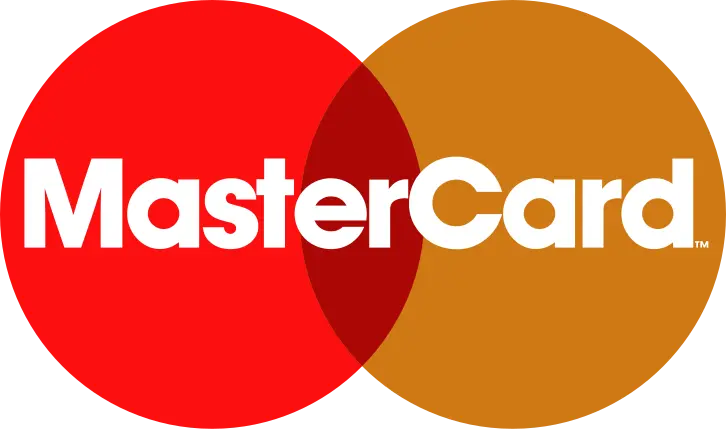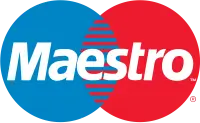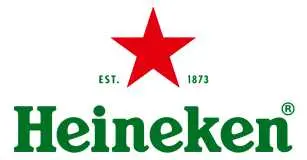
Europe Ready-to-Eat Food Market Growth, Size, Trends, Demand, Revenue and Future Outlook
Europe Ready-to-Eat Food Market Size- By Type, Distribution Channel- Regional Outlook, Competitive Strategies and Segment Forecast to 2033
| Published: Mar-2024 | Report ID: FOOD2440 | Pages: 1 - 154 | Formats*: |
| Category : Food & Beverages | |||
- April 2022: Nomad Foods and the international innovation network Innoget collaborated to launch an open innovation platform. It will be available to academics, subject matter experts, start-ups, and SMEs interested in forming new collaborations, from ideation to product development and market launch.
- February 2022: Nestle SA purchased a controlling share in Orgain, a plant-based nutrition company that develops powders, snacks, and other products. The key objective behind Nestle SA's acquisition could be to extend its business by incorporating major nutrition-based food goods that are organic in nature, allowing the corporation to match consumers' growing preference for organic products. All of the products in the portfolio will be initially retailed in local Tesco stores in the United Kingdom.
-006430122032024.webp)
-006380522032024.webp)
| Report Metric | Details |
| Market size available for years | 2020-2033 |
| Base year considered | 2023 |
| Forecast period | 2024-2033 |
| Segments covered | By Type, By Distribution Channel |
| Regions covered | France, Germany, Italy, Russia, Spain, United Kingdom, Rest of Europe |
| Companies Covered | Conagra Brands Inc., Dr August Oetker Nahrungsmittel KG, Ebro Foods, S.A., Frosta Aktiengesellschaft (FRoSTA AG), McCain Foods Limited, Nestlé S.A., Nomad Foods Ltd, Premier Foods Group Limited, The Kellogg Company, The Kraft Heinz Company, Others |
- Consumers
- Retailers
- Foodservice Providers
- Food Manufacturers
- Distributors and Wholesalers
- Caterers
- Health-Conscious Consumers
- Busy Professionals
- Travelers
- Others
| By Type: |
|
| By Distribution Channel: |
|
| By Region: |
|
- Europe Ready-to-Eat Food Market Size (FY’2024-FY’2033)
- Overview of Europe Ready-to-Eat Food Market
- Segmentation of Europe Ready-to-Eat Food Market By Form (Instant Breakfast/Cereals, Instant Soups, Frozen Snacks, Meat Snacks, Ready Meals, Instant Noodles)
- Segmentation of Europe Ready-to-Eat Food Market By Distribution Channel (Convenience Stores/Grocery stores, Hypermarkets/Supermarkets, Online Retail Stores, Other Distribution Channels)
- Statistical Snap of Europe Ready-to-Eat Food Market
- Expansion Analysis of Europe Ready-to-Eat Food Market
- Problems and Obstacles in Europe Ready-to-Eat Food Market
- Competitive Landscape in the Europe Ready-to-Eat Food Market
- Impact of COVID-19 and Demonetization on Europe Ready-to-Eat Food Market
- Details on Current Investment in Europe Ready-to-Eat Food Market
- Competitive Analysis of Europe Ready-to-Eat Food Market
- Prominent Players in the Europe Ready-to-Eat Food Market
- SWOT Analysis of Europe Ready-to-Eat Food Market
- Europe Ready-to-Eat Food Market Future Outlook and Projections (FY’2024-FY’2033)
- Recommendations from Analyst
1.1. Scope of the report1.2. Market segment analysis
2.1. Research data source
2.1.1. Secondary Data2.1.2. Primary Data2.1.3. SPER’s internal database2.1.4. Premium insight from KOL’s
2.2. Market size estimation
2.2.1. Top-down and Bottom-up approach
2.3. Data triangulation
4.1. Driver, Restraint, Opportunity and Challenges analysis
4.1.1. Drivers4.1.2. Restraints4.1.3. Opportunities4.1.4. Challenges
4.2. COVID-19 Impacts of the Europe Ready-to-Eat Food Market
5.1. SWOT Analysis
5.1.1. Strengths5.1.2. Weaknesses5.1.3. Opportunities5.1.4. Threats
5.2. PESTEL Analysis
5.2.1. Political Landscape5.2.2. Economic Landscape5.2.3. Social Landscape5.2.4. Technological Landscape5.2.5. Environmental Landscape5.2.6. Legal Landscape
5.3. PORTER’s Five Forces
5.3.1. Bargaining power of suppliers5.3.2. Bargaining power of buyers5.3.3. Threat of Substitute5.3.4. Threat of new entrant5.3.5. Competitive rivalry
5.4. Heat Map Analysis
6.1. Europe Ready-to-Eat Food Market Manufacturing Base Distribution, Sales Area, Product Type6.2. Mergers & Acquisitions, Partnerships, Product Launch, and Collaboration in Europe Ready-to-Eat Food Market
7.1. Europe Ready-to-Eat Food Market Value Share and Forecast, By Type, 2024-20337.2. Instant Breakfast/Cereals7.3. Instant Soups7.4. Frozen Snacks7.5. Meat Snacks7.6. Ready Meals7.7. Instant Noodles
8.1. Europe Ready-to-Eat Food Market Value Share and Forecast, By Distribution Channel, 2024-20338.2. Convenience Stores/Grocery stores8.3. Hypermarkets/Supermarkets8.4. Online Retail Stores8.5. Other Distribution Channels
9.1. Europe Ready-to-Eat Food Market Size and Market Share
10.1. Europe Ready-to-Eat Food Market Size and Market Share By Type (2020-2026)10.2. Europe Ready-to-Eat Food Market Size and Market Share By Type (2027-2033)
11.1. Europe Ready-to-Eat Food Market Size and Market Share By Distribution Channel (2020-2026)11.2. Europe Ready-to-Eat Food Market Size and Market Share By Distribution Channel (2027-2033)
12.1. Europe Ready-to-Eat Food Market Size and Market Share By Region (2020-2026)12.2. Europe Ready-to-Eat Food Market Size and Market Share By Region (2027-2033)12.3. France12.4. Germany12.5. Italy12.6. Russia12.7. Spain12.8. United Kingdom12.9. Rest of Europe
13.1. Conagra Brands, Inc.
13.1.1. Company details13.1.2. Financial outlook13.1.3. Product summary13.1.4. Recent developments
13.2. Dr August Oetker Nahrungsmittel KG
13.2.1. Company details13.2.2. Financial outlook13.2.3. Product summary13.2.4. Recent developments
13.3. Ebro Foods, S.A.
13.3.1. Company details13.3.2. Financial outlook13.3.3. Product summary13.3.4. Recent developments
13.4. Frosta Aktiengesellschaft (FRoSTA AG)
13.4.1. Company details13.4.2. Financial outlook13.4.3. Product summary13.4.4. Recent developments
13.5. McCain Foods Limited
13.5.1. Company details13.5.2. Financial outlook13.5.3. Product summary13.5.4. Recent developments
13.6. Nestlé S.A.
13.6.1. Company details13.6.2. Financial outlook13.6.3. Product summary13.6.4. Recent developments
13.7. Nomad Foods Ltd
13.7.1. Company details13.7.2. Financial outlook13.7.3. Product summary13.7.4. Recent developments
13.8. Premier Foods Group Limited
13.8.1. Company details13.8.2. Financial outlook13.8.3. Product summary13.8.4. Recent developments
13.9. The Kellogg Company
13.9.1. Company details13.9.2. Financial outlook13.9.3. Product summary13.9.4. Recent developments
13.10. The Kraft Heinz Company
13.10.1. Company details13.10.2. Financial outlook13.10.3. Product summary13.10.4. Recent developments
13.11. Others
SPER Market Research’s methodology uses great emphasis on primary research to ensure that the market intelligence insights are up to date, reliable and accurate. Primary interviews are done with players involved in each phase of a supply chain to analyze the market forecasting. The secondary research method is used to help you fully understand how the future markets and the spending patterns look likes.
The report is based on in-depth qualitative and quantitative analysis of the Product Market. The quantitative analysis involves the application of various projection and sampling techniques. The qualitative analysis involves primary interviews, surveys, and vendor briefings. The data gathered as a result of these processes are validated through experts opinion. Our research methodology entails an ideal mixture of primary and secondary initiatives.



Frequently Asked Questions About This Report
PLACE AN ORDER
Year End Discount
Sample Report
Pre-Purchase Inquiry
NEED CUSTOMIZATION?
Request CustomizationCALL OR EMAIL US
100% Secure Payment






Related Reports
Our Global Clients
Our data-driven insights have influenced the strategy of 200+ reputed companies across the globe.






















